More plants are replacing PLCs with cyber-proof, cost-effective hardware safety systems that deliver reliability without added complexity.

For decades, Programmable Logic Controllers (PLCs) have been the go-to solution for safety systems across refineries, chemical plants, and power facilities. Reliable, flexible, and widely understood, PLCs became the default choice for monitoring, controlling, and responding to critical process conditions. Yet, default doesn’t always mean optimal.
As operating budgets tighten and cybersecurity threats intensify, more facilities are reevaluating whether software-based PLCs are the best fit for safety alarms, interlocks, and Safety Instrumented Systems (SIS). This is particularly true in applications with lower input/output (I/O) requirements. Increasingly, many are turning to simpler, hardware-based alternatives, such as dedicated trip amplifiers and relay-based safety systems, which can offer equivalent protection with fewer drawbacks.
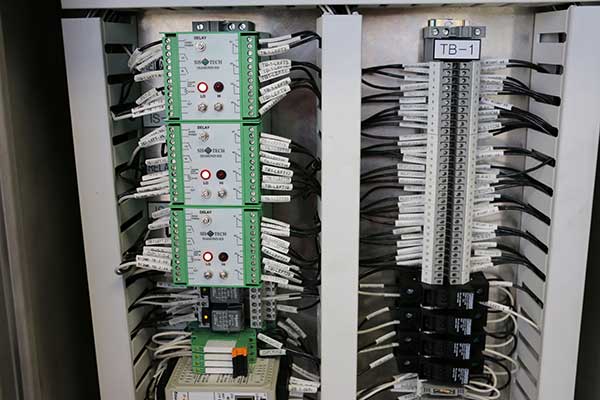
“There’s a perception that PLCs are the only option,” says Tom Crumlish, an instrumentation systems expert at SOR Controls Group. “But in many cases, they’re overkill.”
SOR designs and manufactures a broad range of industrial process instrumentation, much of which has traditionally been integrated with PLCs. Lately, however, the company has observed a growing shift as facilities explore alternatives to software-based control.
“When you’re designing safety systems, you want as few variables as possible,” explains Crumlish. “Every layer of software introduces a new set of unknowns.”
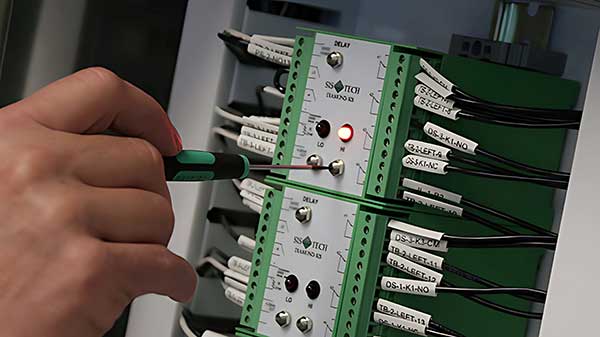
With hardware-based systems, you eliminate many of the variables introduced by programmable logic. Since these systems operate without software, they are inherently immune to cyber threats. They also require less infrastructure, can be mounted directly in the field, and continue to function reliably under extreme environmental conditions.
“These systems are designed to be simple,” adds Crumlish. “In safety, simplicity is a strength. Every time you remove a layer of complexity, you reduce the chance of failure.”
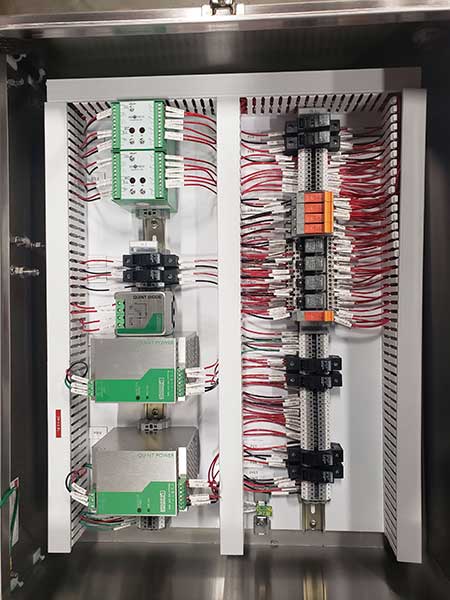
While PLCs excel in managing complex logic and multi-variable conditions, they come with several notable drawbacks:
By contrast, hardware-based systems are “rightsized” for the majority of safety applications, delivering equivalent functionality at a fraction of the cost, often up to 85% less than a traditional PLC. Most hardware systems are field-mountable, allowing installation directly adjacent to the equipment they protect. This eliminates many environmental constraints and reduces infrastructure complexity.
These systems are well-suited for both new construction and retrofit projects (brownfield sites) and can also be configured to supplement existing non-certified PLC-based architectures. Common applications include interlocks, permissives, automated overfill prevention, burner management, high-integrity pressure protection systems (HIPPS), and protection for pumps or wellheads.
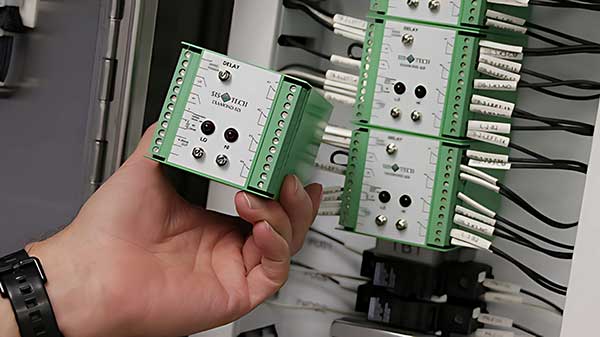
With constant pressure to maintain uptime, protect assets, and ensure worker safety, reliability is a non-negotiable factor in these industrial environments. Hardware-based safety systems, built on discrete components like relays and trip amplifiers, have been field-proven over decades of real-world use.
As an example, the Diamond-SIS is a field-mounted safety system built around a de-energized or fail-safe trip principle which has operated for more than 20 years without a single recorded failure – spurious or dangerous. When predefined process parameters are exceeded, the system initiates an automatic shutdown, ensuring a fail-safe response without requiring human intervention or network connectivity.
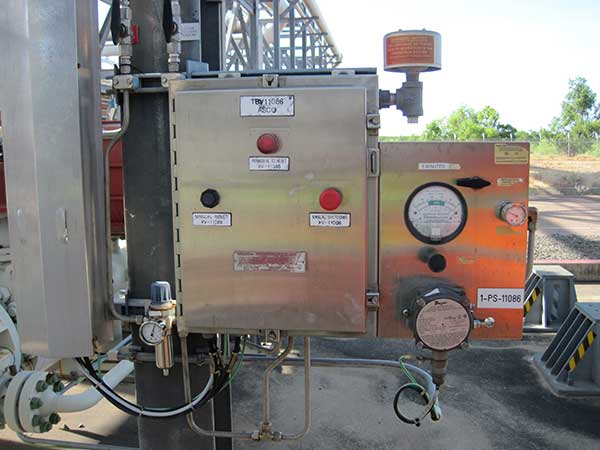
For safety trips, hardware-based systems, such as the Diamond-SIS developed by SIS-TECH, are certified to IEC 61508 Safety Integrity Level (SIL) 3 and can be integrated with plant-wide Distributed Control Systems (DCS). This type of configuration enables real-time monitoring while maintaining the inherent reliability of a hardware-based design.
When integrated with the DCS, the hardware-based system can automatically adjust final control elements – such as placing valves into a safe state – acting as a permissive for a controlled, orderly restart once the abnormal condition is resolved. The key advantage lies in combining the dependability of hardware logic with the visibility and coordination of modern control systems.
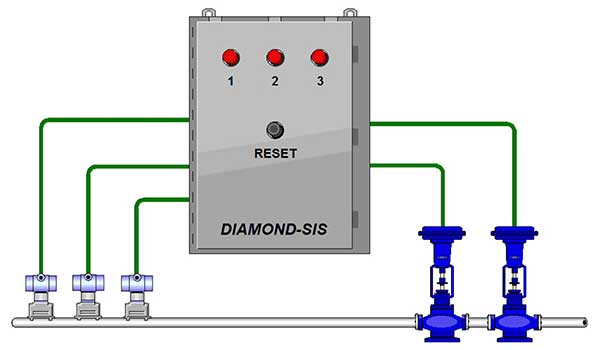
Many hardware-based safety systems also excel in environments where space, power, and communications infrastructure are limited. These systems can be deployed in remote areas or satellite facilities that lack climate control or stable power sources.
“They draw very little current, so they can run on solar power without the need for a network connection,” says Crumlish. “We’ve seen these systems operate in extreme heat, high vibration, and electrically noisy environments without issue. That kind of dependability is exactly what safety systems need.”
Unlike software-based platforms, hardware systems are physically wired to execute specific safety functions. Voting logic, for instance – two-out-of-three (2oo3) sensors – can be implemented using wiring and trip amplifiers, mounted in a rack room or local panel. While this approach may appear less flexible, it delivers a higher level of reliability, particularly in safety applications that don’t require frequent reconfiguration.
“Some facilities like to know they can reprogram their systems with a PLC,” explains Pete Fuller, an engineer and application manager at SIS-Tech who supports the deployment of hardware-based safety systems. “Our integrated Diamond-SIS is scalable and can be upgraded by simply rewiring or adding components. Modifications to large systems can usually be done in a single day.”
However, Fuller adds that for most applications, when a hardware-based system is installed to mitigate a particular hazard, it becomes the foundation for the process’s safe operation and will remain in place, unchanged, for decades.
The manual configuration process for hardware safety systems also eliminates the risk of accidental code changes or remote cyber intrusions. By removing the software layer, hardware-based safety systems reduce exposure to two of the most common failure modes: human error and digital attack.
Cybersecurity concerns are becoming a central factor in the move away from PLC-based safety systems. As critical infrastructure faces increasingly sophisticated cyber threats, many operators are reassessing just how much connectivity is truly necessary for safety applications.
“Hardware doesn’t need a firewall,” says Fuller. “There’s no login, no remote access, no software patch updates. It just works. That’s incredibly valuable in safety applications.”
By contrast, even well-secured PLCs are part of a broader network architecture and therefore remain potential targets for intrusion. The 2021 ransomware attack on Colonial Pipeline, which disrupted nearly half of the East Coast’s fuel supply, served as a stark reminder: even systems with advanced protections can be compromised if they’re connected.
Hardware-based systems may not be ideal for every situation, however. In applications that require hundreds of sensor inputs, complex sequencing, or advanced data analytics, PLCs offer unparalleled flexibility and scalability. But for many refinery and industrial processes, where the safety logic is straightforward and the I/O count is limited, hardware-based systems present a more targeted, cost-effective, and resilient solution.
As industrial operators continue to modernize their safety protocols, some are choosing to upgrade, not by layering on more complexity, but by simplifying. In industries where uptime, safety, and security are non-negotiable, hardware-based safety systems are proving that less complexity can deliver more confidence and greater protection when it matters most.
For more information, contact SIS-TECH, phone: 713-909-2100, email: info@sis-tech.com, or visit https://sis-tech.com/.

About the Author:
Greg Rankin is a freelance writer with more than 20 years of experience writing about the oil and gas industry, petrochemicals, and refining.
In this episode, I sat down with Beejan Giga, Director | Partner and Caleb Emerson, Senior Results Manager at Carpedia International. We discussed the insights behind their recent Industry Today article, “Thinking Three Moves Ahead” and together we explored how manufacturers can plan more strategically, align with their suppliers, and build the operational discipline needed to support intentional, sustainable growth. It was a conversation packed with practical perspectives on navigating a fast-changing industry landscape.